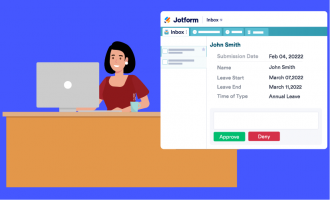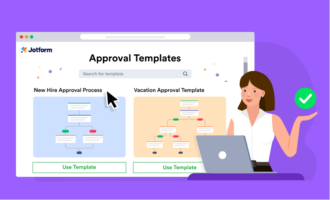According to Intuit, American workers have an average of 11 to 15 days of paid time off available each year. Unfortunately, as much as 70 percent of these employees don’t use all their vacation days, if any.
But paid time off (PTO) is vital for employees to live balanced and healthy lives. Working long hours can significantly increase the risk of stroke and heart disease, according to a study published in The Lancet. The American Medical Association also recommends paid vacations to bolster mental health.
Vacation and sick leave don’t just benefit employees. Believe it or not, PTO is good for employers too. Oxford University researchers found that happy employees are 13 percent more productive.
This translates to economic prosperity as well. The landmark Project: Time Off survey studied the impacts of employees’ vacation habits on their country’s economy. Interestingly, economies grew by billions of dollars in the years in which employees used paid time off most.
For example, between 2016 and 2017, year-over-year vacation increased by less than half a day in the United States, correlating with a $30.7 billion addition to the economy in that same period and creating over 200,000 jobs.
As more employees seek work-life balance, employers need to step up their time-off tracking to avoid logistical nightmares. That’s why establishing a well-designed leave management system is imperative.
What is a leave management system?
A leave management system (also known as a time-off management system) is a set of procedures that track vacations, sick days, and other employee absences. Many companies offer a limited number of paid vacations and sick days, so employees aren’t paid if they take off more time than allowed.
The system includes the tools and processes employees use to request PTO as well as the workflow that routes these requests to the correct managers and departments, including payroll. Finally, this system must be ruled by criteria that define which leave approvals are granted and how employees are notified of the decision.
Every leave management system must meet a few goals to be effective.
Make fair decisions
The system should ensure all employees who want to take time off have an equal opportunity to use their allotted vacation days.
Maintain employee morale
Efficient processes that make it simple and convenient for employees to request vacation encourage them to ask for time to rest without creating more stress, helping them feel supported and appreciated.
Accurately track time off
Organizing time-off information ensures employees are paid for their unused vacation and sick days, preventing disputes with workers and reducing conflict for workers and human resources departments.
Avoid workflow disruptions
Good leave management keeps an employee’s vacation from overlapping with their department’s busy seasons, deadlines, or other resource priorities.
Why you should automate your leave management
In the past, leave was managed by paper forms and basic spreadsheets. However, these manual leave management systems are cumbersome and time-consuming. They’re also prone to mistakes in record-keeping, which can cause problems.
Now, many workflow software platforms help companies automate these processes. Here are some of the benefits of using these programs.
Eliminate paperwork
One of the biggest benefits of a digital leave management process is that it’s paperless. All communication occurs electronically, and requests, time-off approvals, and other records are stored in the cloud.
Promote policy consistency
Manual time-off management makes it easier for people to skirt rules. Online platforms store PTO records that can’t be secretly edited. In addition, these systems record policies digitally and display updates instantaneously, rather than relying on paper memos or emails that might get lost in the shuffle.
Ensure compliance with labor laws
Automated leave management systems help employers build time-off policies that follow local and federal laws. If you try to limit vacation time in violation of these laws, the platform will generate warnings, or even make it impossible to go below a certain threshold.
Reduce human error
When PTO logs are digitized, information is stored in one place where anyone can view it. This helps everyone stay on the same page about how much time employees have taken off and how much vacation time they have left.
Prevent resource issues
Automated processes better visualize time-off requests than traditional paper methods. Managers can easily compare their employees’ requested time-off dates with a calendar of departmental deadlines and other workflows to ensure the team won’t be strapped for help at critical moments.
Increase employee morale
In America, people feel guilty about taking time off — especially as teams become busier. Online platforms make it easier for employees to request the time off they need. They can request vacation days with just a few clicks of a button instead of filling out paperwork and filing it in their boss’s inbox. These platforms also make it easier for employees to see how many vacation and sick days they have available.
How to develop a better leave management system
Now that you know all the benefits of an effective leave management system, here’s what you need to build one.
Familiarize yourself with local and federal labor laws
Before you begin drafting your company’s time-off policies, review your federal and local labor laws, and ensure all of your policies — and the way you administer them — are in compliance. It’s possible to violate these laws without even meaning to, so study them carefully to avoid fines, lawsuits, and other penalties.
Better yet, consult with a knowledgeable attorney about the laws and request guidelines to follow as you draft your PTO policies. Have the attorney review these policies just to be sure.
Consider the market
In addition to labor laws, evaluate leave trends in the overall job market, especially in your industry. In a bid to attract more talent, many companies are implementing unlimited PTO. To make sure employees get the rest and rejuvenation they need, other companies have a mandatory vacation policy.
Carefully assess the leave policies other organizations in your industry follow, how these policies affect their operations, and how they might attract talent. Then consider the role these policies could play in your company culture.
Outline your leave policies
Next, it’s time to formalize your time-off policies. You should include
- What types of leave are offered, such as vacation time, sick days, jury duty, parental leave, voting, and more
- How many days per year are allotted in each category
- How time off accrues
- What processes employees follow to request leave
- What happens to unused time off — whether it rolls over to the next year, gets lost, or is paid out to employees
Communicate your guidelines
Human resources should clearly outline leave policies to each new employee during onboarding. The information should also be accessible in online portals. Many HR platforms are the basis of an automated leave management system.
Beyond clearly written leave policies, your work culture should champion employees’ rights. Remind employees to take vacation or extra days off after an intense deadline. Send periodic reminders to employees who have accrued a lot of unused time off. Find ways to encourage self-care because healthier and happier employees are better for your company.
Jotform Approvals to the rescue
Every request for time off needs to be reviewed by the appropriate decision-maker who checks that a proposed vacation won’t clash with their department’s workflow. In a large organization with many employees, this process can become complicated. But automation takes a lot of busywork out of the equation.
Jotform Approvals streamlines these approval processes by offering dozens of customizable form templates and workflows already built with human resources departments’ needs in mind. With a drag-and-drop interface, you can easily build a robust approval workflow directly from forms.
For example, to initiate a PTO approval workflow, an employee fills out a request for leave form. You can program advanced conditional logic through Jotform Approvals to automatically route the request to the right manager, who receives a notification that they have a new PTO request to review. They approve the request in just a few clicks, and the employee is automatically notified of their decision.
Jotform Approvals saves all submissions in one place. Managers can quickly review them in batches through Jotform Tables. Requests can even be accessed on mobile devices through the Jotform Mobile Forms app.
Conclusion
Proper leave management is vital to your company. Paid time off is how your employees refresh and recharge to fight burnout and give their best at work.
Create easy-to-understand PTO procedures that follow the law. And make the leave approval process effortless with automation.
This will help employees feel supported and more engaged as contributors to your company. A well-organized time-off system will also stop resource crunches that result from ill-timed vacations and other issues that can crop up from losing track of everyone’s requests.
Fortunately, with automation platforms like Jotform Approvals, leave management is faster than ever, positioning you to create even better policies — without a ton of paperwork. Try the new Jotform Approvals today.










































Send Comment:
2 Comments:
More than a year ago
Streamlining the leave management process is essential for improving job satisfaction. By automating the processing of leaves, it will take a fraction of the time it would take to do so manually. Employees will be more motivated and focused at work if they know they can apply for leaves and get approval quickly. One should use leave management software (
More than a year ago
Leave Management is currently one of the HR department’s most major concerns. As we approach towards the second half of 2021, every organization understands that integrating AI into the HR department will drastically improve the lives of both employers and employees.